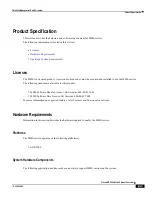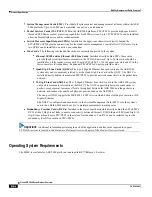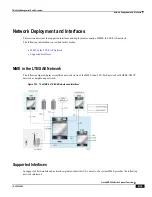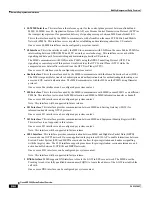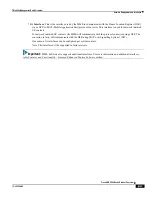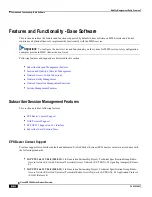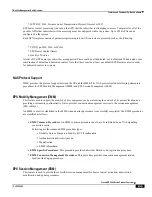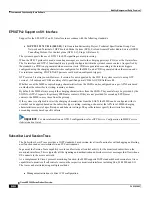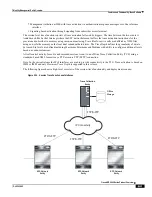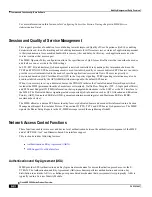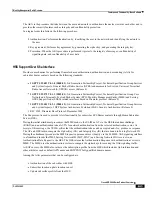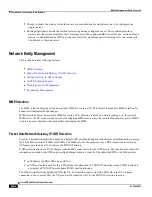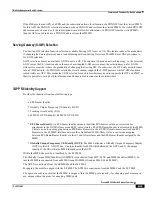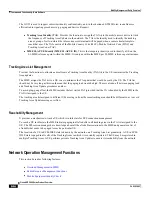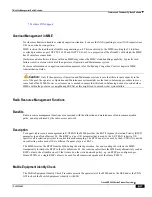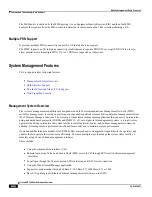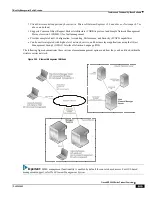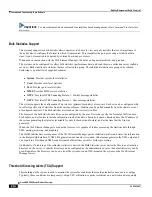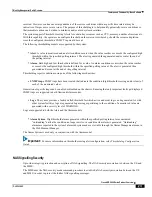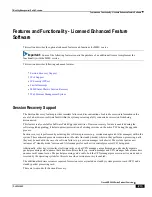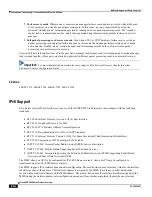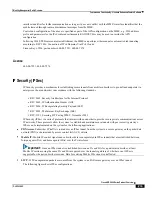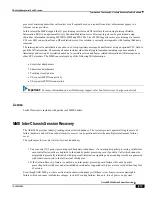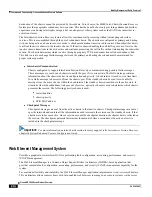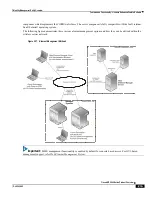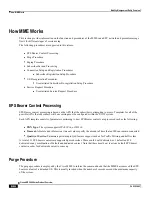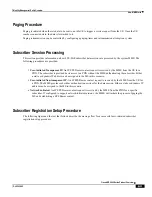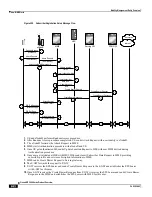
Mobility Management Entity Overview
Features and Functionality - Base Software ▀
Cisco ASR 5000 Series Product Overview ▄
OL-22938-02
Overload Management in MME
Provides mechanism to handle overload/congestion situation. It can use the NAS signalling to reject NAS requests from
UEs on overload or congestion.
MME restricts the load that its eNodeBs are generating on it. This is achieved by the MME invoking the S1 interface
overload procedure as per 3GPP TS 36.300 and 3GPP TS 36.413 to a proportion of the eNodeB‘s with which the MME
has S1 interface connections.
Hardware and/or software failures within an MME may reduce the MME‘s load handling capability. Typically such
failures result in alarms which alert the operator or Operation and Maintenance system.
For more information on congestion control management, refer Configuring Congestion Control chapter in MME
Administration Guide.
Caution:
Only if the operator or Operation and Maintenance system is sure that there is spare capacity in the
rest of the pool, the operator or Operation and Maintenance system might use the load re-balancing procedure to move
some load off an MME. However, extreme care is needed to ensure that this load re-balancing does not overload other
MMEs within the pool area (or neighboring SGSNs) as this might lead to a much wider system failure.
Radio Resource Management Functions
Benefits
Radio resource management functions are concerned with the allocation and maintenance of radio communication
paths, and are performed by the radio access network.
Description
To support radio resource management in E-UTRAN the MME provides the RAT/Frequency Selection Priority (RFSP)
parameter to an eNodeB across S1. The RFSP is a ‗per UE‘ parameter that is used by the E-UTRAN to derive UE
specific cell reselection priorities to control idle mode camping. The RFSP can also be used by the E-UTRAN to decide
on redirecting active mode UEs to different frequency layers or RATs.
The MME receives the RFSP from the HSS during the attach procedure. For non-roaming subscribers the MME
transparently forwards the RFSP to the eNodeB across S1. For roaming subscribers the MME may alternatively send an
RFSP value to the eNodeB across S1 that is based on the visited network policy, e.g. an RFSP pre-configured per
Home-PLMN, or a single RFSP values to be used for all roamers independent of the Home-PLMN.
Mobile Equipment Identity Check
The Mobile Equipment Identity Check Procedure permits the operator(s) of the MME and/or the HSS and/or the PDN-
GW to check the Mobile Equipment's identity with EIR.
Summary of Contents for ASR 5000 Series
Page 1: ......
Page 26: ......
Page 48: ...New In Release 10 0 SCM Features Cisco ASR 5000 Series Product Overview OL 22938 02 ...
Page 50: ......
Page 58: ......
Page 68: ......
Page 126: ......
Page 138: ......
Page 146: ......
Page 218: ......
Page 236: ......
Page 356: ......
Page 374: ......
Page 422: ......
Page 496: ......
Page 572: ......
Page 654: ......
Page 700: ......
Page 726: ......
Page 784: ......
Page 816: ......
Page 844: ......
Page 906: ......
Page 926: ......
Page 942: ......
Page 943: ...Cisco ASR 5000 Series Product Overview OL 22938 02 Chapter 30 Technical Specifications ...
Page 966: ......
Page 972: ......

